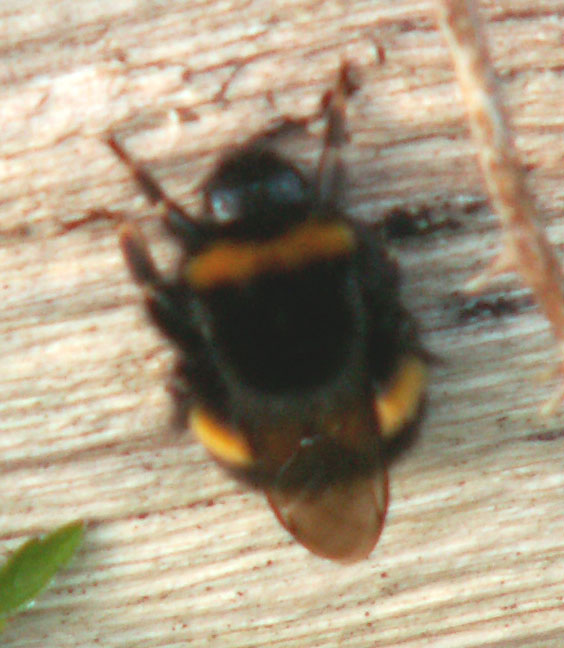

What
Bumblebees are these please?
 |
 |
This picture confused me at first. It is just one bee on the Pixie Path to Mill Hill. The Queen had a white tail with slight V-shaped black markings and an orange band near its head.
My first choice of species was Bombus vestalis, but it it is at least one month too early (by some reports) for this cuckoo bee. The brownish wings were rather distinctive.
This is a Bombus terrestris queen. I admit the description sounds like B. vestalis, but the pictures show the basal darker band of B. terrestris, not the patches of B. vestalis. It is not absolutely too early for B. vestalis as it, like its host, has been getting rather earlier, however I have seen only one or two quite this early. A picture of the hind leg would be a good idea and clinch it.

A Buff-tailed Bumblebee, Bombus terrestris, (illustrated immediately above) was seen ten minutes before the cuckoo bee about two metres from the same location.
Cuckoo Bee ID candidates:
Bombus
vestalis
This
is the most likely species as it is frequently seen, it has been recorded
locally before by me, and has the host species of the Buff-tailed
Bumblebee, Bombus terrestris. It is
also recorded that the Queen has a white tip to its thorax with a lemon-coloured
band, although the bee in question was only lightly marked in black over
the white and not seen in the horizontal black banding shown in photographs
of this species. It has been observed in late April according to messages
on the Bees, Wasps and Ants
Recording Society Yahoo Group. Later reports say it has been seen in
March
in Sussex before.
Bombus
rupestris
I
have not been able to discover a photograph of the male of this species
to compare. The white on the female does not seem quite as bright in the
photograph seen. It does seem to be regarded as rarely (although more records
seem to be appearing) seen compared to the species above. It does not seem
to be seen early in the year. It is a parasite on the bumblebee species
Red-tailed
Bumblebee, Bombus lapidarius, which
was seen nearby and is frequently seen in March
in the Shoreham area.
This
is the Buff-tailed Bumblebee,
Bombus
terrestris.
 |
 |
 |
|
Slonk Hill south Bombus vestalis ID confirmed by Stuart Roberts |
Mill Hill (lower slopes) |
Mill Hill |
 |
 |
 |
|
Slonk Hill south Bombus vestalis The hind tibia is convex in shape...and therefore a cuckoo bumble. Comment & ID confirmed by Stuart Roberts |
Mill Hill Bee on Greater Knapweed |
Mill Hill Bee on Musk Thistle |
The identity of these bumblebees need confirmation.